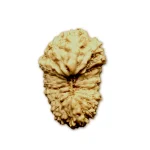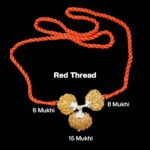What Is the Shiva Linga
“Lingam” is one of the most misunderstood motifs of Sanatan Dharma. It has been subject to such a bad smear campaigning by Westerners, especially missionaries, which even Merriam-Webster dictionary defines it as a stylized phallic symbol.
THE MISINTERPRETATION:
This is not only misleading but also baseless. Such misinterpretations are done in later Vedic period and popularized much later, when Indian literatures actually came into hands of foreign scholars. It was difficult to interpret the language and a word may have different meaning depending on the context. Some of the easy interpretation may be misleading. Many foreign scholars are of the view that the phallus symbolizes the linga, sexual organ, of Lord Shiva and the basin in connection with it represents the yoni, or vulva, of Goddess Durga. In a sense, the linga united with the yoni symbolizes creation.
According to some people, the Shiva Lingam generally signifies the magnificent light that is the indication or identity of Lord Shiva. This light or flame is solidified and makes the Shivalinga. The lower base of the structure is said to represent the lamp and the upper section, the flame. Now it is not possible for a common man to pray to Brahman which is beyond any characteristic. Human beings need a form to worship. In Sanatana Dharma, each individual has the freedom to define the Supreme Being or Brahman in the most convenient way he/ she is comfortable.Some scholars of the Hindu scriptures say that Linga is merely an abstract symbol of the God. They point towards several legends in Hinduism where a sundry rock or even a pile of sand has been used by as a Lingam or the symbol of Shiva. Citing a particular instance they say, Arjuna once fashioned a linga of clay when worshipping Shiva. Scholars of Puranas, thus argue that too much should not be made of the usual shape of the Lingam. Scholars say that the interpretation of Shiva Linga as an abstract form of God is also consonant with philosophies that hold that God may be conceptualized and worshipped in any convenient form. The form itself is irrelevant, as the divine power that it represents is all that matters. Scholars thus say that Shivalinga represent the formless Nirguna Brahman or the formless Supreme Being.
In The foremost Linga which is primary and is devoid of smell, colour, taste, hearing, touch, etc., is spoken of as Prakriti (Nature).
Thus with the right interpretation and proper study about Hinduism many misconceptions can be cleared, once it is understood it will spread true light of knowledge, love and happiness in the world







